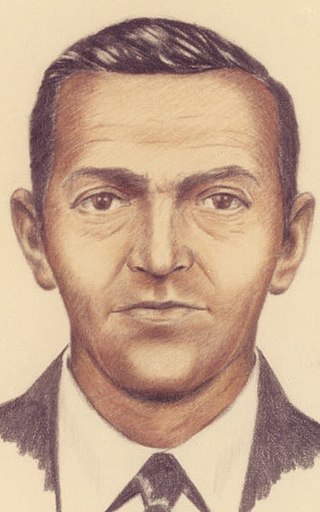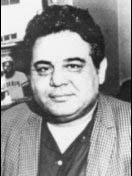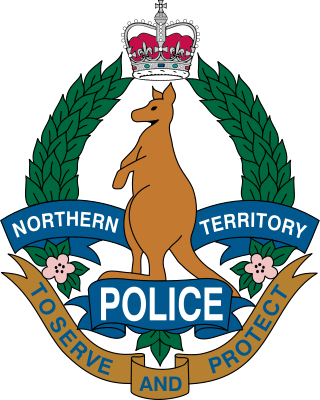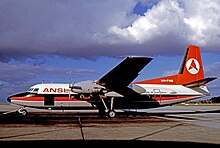
D. B. Cooper is a media epithet for an unidentified man who hijacked Northwest Orient Airlines Flight 305, a Boeing 727 aircraft, in United States airspace on November 24, 1971. During the flight from Portland, Oregon, to Seattle, Washington, the hijacker told a flight attendant he was armed with a bomb, demanded $200,000 in ransom, and requested four parachutes upon landing in Seattle. After releasing the passengers in Seattle, the hijacker instructed the flight crew to refuel the aircraft and begin a second flight to Mexico City, with a refueling stop in Reno, Nevada. About 30 minutes after taking off from Seattle, the hijacker opened the aircraft's aft door, deployed the staircase, and parachuted into the night over southwestern Washington. The hijacker has never been found or conclusively identified.

Air France Flight 8969 was an Air France flight that was hijacked on 24 December 1994 by the Armed Islamic Group of Algeria (GIA) at Houari Boumediene Airport, Algiers. The terrorists murdered three passengers and their intention was either to crash the plane over the Eiffel Tower or the Tour Montparnasse in Paris. When the aircraft reached Marseille, the National Gendarmerie Intervention Group (GIGN), a counter-terror unit of the French National Gendarmerie, stormed the plane and killed all four hijackers.
Pacific Southwest Airlines (PSA) was a regional U.S. airline headquartered in San Diego, California, that operated from 1949 to 1988. It was the first large discount airline in the United States. PSA called itself "The World's Friendliest Airline" and painted a smile on the nose of its airplanes, the PSA Grinningbirds. Opinion L.A. of the Los Angeles Times called PSA "practically the unofficial flag carrier airline of California for almost forty years."
A sky marshal is a covert law enforcement or counter-terrorist agent on board a commercial aircraft to counter aircraft hijackings. Such an agent is also known as an air marshal, a flight marshal, or an in-flight security officer (IFSO). Sky marshals may be provided by airlines such as El Al, or by government agencies such as the Austrian Einsatzkommando Cobra, Royal Canadian Mounted Police, German Federal Police, National Security Guard in India, Metropolitan Police SO19 from London, Pakistan Airports Security Force, or US Federal Air Marshal Service.
This is a list of aviation-related events from 1972.
This is a list of aviation-related events from 1971.
This is a list of aviation-related events from 1975.
This is a list of aviation-related events from 1977.
This is a list of aviation-related events from 1978.
This is a list of aviation-related events from 2000.

Samuel Joseph Byck was an American hijacker and attempted assassin. On February 22, 1974, he attempted to hijack a plane flying out of Baltimore/Washington International Airport, intending to crash into the White House in the hopes of killing President Richard Nixon. During the incident, Byck killed a policeman and a pilot, but was shot and wounded by another policeman before committing suicide.

The Northern Territory Police Force is the police body that has legal jurisdiction over the Northern Territory of Australia. This police service has 1,607 police members made up of 83 senior sergeants, 228 sergeants, 912 constables, 220 auxiliaries, and 64 Aboriginal Community Police Officers. The rest of the positions are members of commissioned rank and inoperative positions. It also has a civilian staff working across the NT Police, Fire and Emergency Services.

Alice Springs Airport is an Australian regional airport 7 nautical miles south of Alice Springs, Northern Territory. The airport was notably involved in Australia's second domestic airline hijacking, and later a suicide attack by a former airline employee which claimed the lives of four others.

Philippine Airlines Flight 812 was a scheduled domestic passenger flight from Francisco Bangoy International Airport in Davao City to Ninoy Aquino International Airport near Manila. On May 25, 2000, an Airbus A330-301 operating on the route was hijacked by a man later identified as Reginald Chua, just before the airplane was about to land. The flight carried 278 passengers and 13 crew members.

Aeroflot Flight 3739 was a Soviet domestic passenger flight from Irkutsk to Leningrad with a stopover in Kurgan. On March 8, 1988, after the Tupolev Tu-154 operating the flight had left Kurgan, it was hijacked by the Ovechkin family, whose members sought to defect from the Soviet Union.

Aeroflot Flight 19 was a scheduled passenger flight from Bykovo Airport, Moscow, to Bryansk Airport, Bryansk. On 2 November 1973, a Yak-40 aircraft operating the flight was hijacked by 4 people 10 minutes before landing. The aircraft was then diverted to Moscow's Vnukovo Airport, where the hijackers demanded a buyout and provision of a flight to Sweden. The hostages inside the aircraft were subsequently liberated after the authorities stormed the aeroplane. This is one of the first well-known cases of storming a hijacked aircraft on the territory of the USSR.








